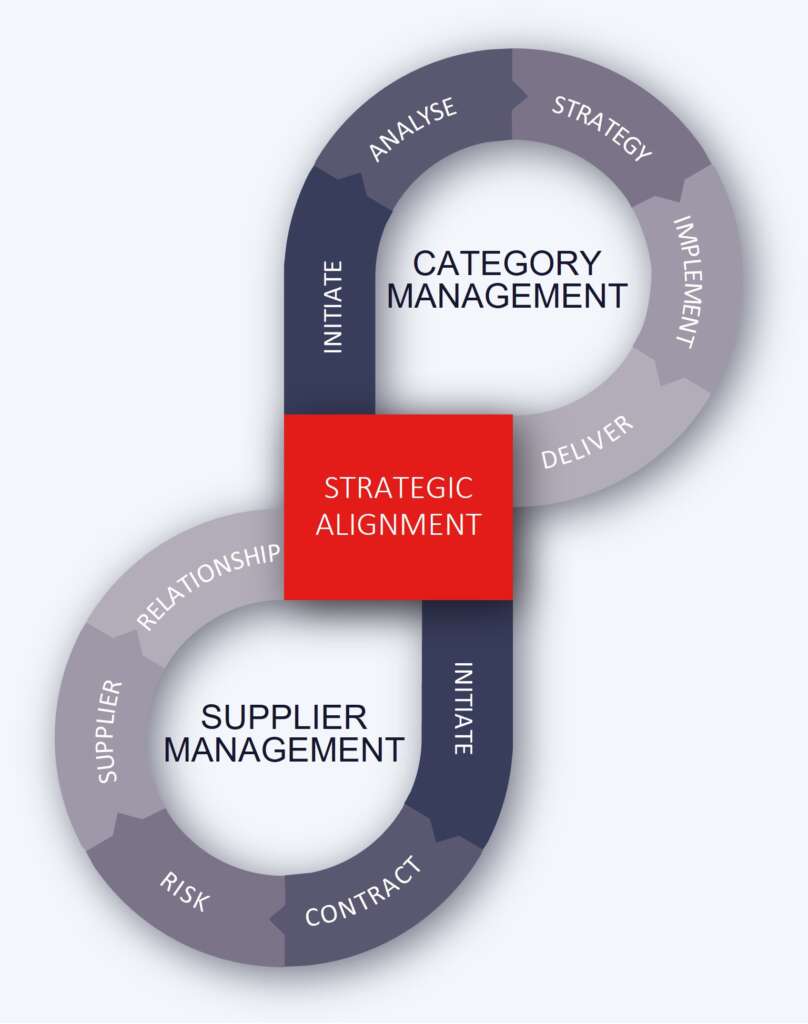
Insight
Category management – Is it more than just strategic sourcing?
By Simon Brown |
Cross-functional teams carrying out formal opportunity analysis and prioritisation is an essential element of category management.
Our category management survey demonstrated that many organisations still see category management as simply another term for strategic sourcing. However, our research concludes that category management is more than that. So is Category Management more than just Strategic Sourcing?
- It is a strategic end-to-end process for buying goods and services
- It aligns business goals and customer requirements with supply market capability
- It maximises long-term value for the organisation
Strategic alignment – the missing component from most organisations’ procurement approach
As part of our survey, we asked over 300 global organisations: “What activities does your category management process cover?”
66% of category management leaders agree a joint annual plan of category projects with business stakeholders versus 31% of followers.

Our survey highlights the risk that if you don’t include robust strategic alignment activity in your process, your organisation is likely to miss many substantial opportunities.
For example, one pharmaceutical company identified £25m of opportunity through a strategic alignment exercise.
How strategic alignment fits with category and supplier management
Future Purchasing recognises that strategic alignment is a broad concept that incorporates strategic alignment, category management and supplier management:
- Strategic alignment: annual planning of category & supplier management activities by category directors. Joint creation with stakeholders of a pipeline of projects based on their priorities and plans.
- Category management: creating & implementing sub-category strategies to deliver cost savings and other value.
- Supplier management: proactive management of supplier performance to deliver value improvement from suppliers.

We have seen from our survey that strategic alignment is most often the missing piece of the procurement jigsaw, but as you can see from the schematic above, strategic alignment is the core process that anchors category and supplier management activities.
Many organisations neglect or overlook strategic alignment because there is often short-term pressure to deliver rapid tactical cost savings. Yet robust planning and an integrated category management approach allow followers to improve their average value impact by 3.2 x and leaders by 1.7 x.
Seven key lessons from the Leaders – how to include strategic alignment in your overall approach to category management
- Integrate your approach – Incorporate all three processes – strategic alignment, category management, and supplier management – in one seamless approach.
- Have a flexible process – Ensure your processes are flexible to fit your organisation’s needs. This will allow procurement activity to be initiated at various points in the process. Procurement can start with strategic alignment to identify projects and then move into category management or supplier management.
- Plan annually – Undertake your procurement planning activity annually as a minimum and align it with your organisation’s corporate budgeting cycle.
- Engage your stakeholders – Engage your organisation and functional areas to understand their strategies, objectives and plans.
- Engage suppliers – Use this as an opportunity to identify potential new suppliers, new technologies and overlaps between subcategories.
- Analyse your opportunities – Work closely with stakeholders to strategically review contracts and spend to prioritise a list of category and supplier opportunities.
- Understand resource requirements – Agree the allocation of procurement team members and cross-functional resource requirements needed to deliver category and supplier project opportunities.
Find out more about strategic alignment
Benchmark your category management capability
FP can help you to confirm the scale of additional benefit available to your organisation by optimising category management.
We can compare you against “world class” performance and confirm what you need to change in order to optimise category management and advance to the next level of performance.
The process takes approximately five days and the report will identify your strengths and weaknesses and a customised roadmap to optimise category management in your organisation.
Arrange a time with Mark Hubbard by clicking the “Let’s Talk” button.

About Simon Brown
Director
30 years procurement experience in line management and
consulting roles.
Previous employment: British Aerospace, British Airways, QP Group
Education: MBA, London Business School. BA (Hons) Business Studies.
CIPS: member
Further Reading

Blog
Category Management – 10 Reasons why it’s not just ‘Common Sense’ hint: It is ‘Rocket Science’
01/06/2021
Read More

Webinar
A Meeting of Minds Webinar
18/07/2024
Watch

Case study
AstraZeneca
At AstraZeneca the foundations of category management are built on stakeholder engagement
07/11/2023
Read More

